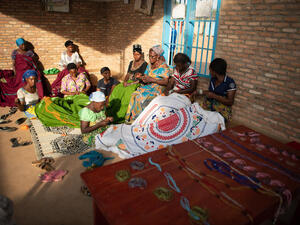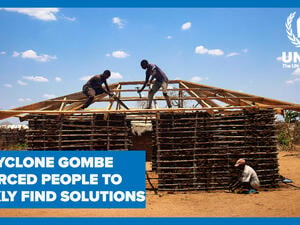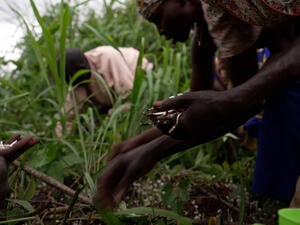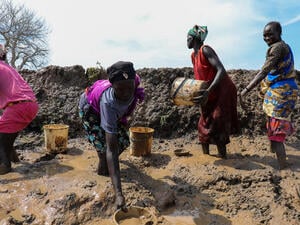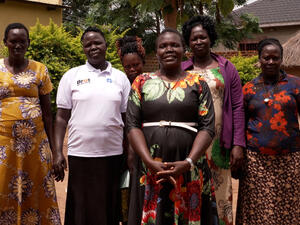Farming and fishing folk return to villages in parts of north-west Sri Lanka
Farming and fishing folk return to villages in parts of north-west Sri Lanka

A happy returnee holds a hurricane lamp in one hand and balances aid items on her head at a UNHCR distribution point.
ARIPPU, Sri Lanka, June 19 (UNHCR) - The coastal village of Arippu in north-western Sri Lanka has been deserted for years, but people are coming back from nearby towns with the help of UNHCR now the long war with the rebel Liberation Tigers of Tamil Eelam (LTTE) seems to be over.
The villagers of Arippu, located in Mannar district, had fled their homes over the years to escape from fighting between the LTTE and government forces. Last month, the government declared it had defeated the LTTE, ending the 25-year-old conflict in the north and east of Sri Lanka.
The authorities are now encouraging and facilitating a return to Arippu and other nearby villages and on June 9 UNHCR brought back a first group of 1,676 people (about 390 families) to Arippu and some 555 people (about 150 families) to five other villages in an area where most people rely on farming or fishing.
Some of the returnees, like Pathmanathan Sivananthan, were brought back by the government in May on "go-and-see" visits, which helped them decide whether or not to return permanently.
"Most of the villages in this area were deserted. The only signs of life before the recent returns were soldiers or cattle left behind when people fled," said Sivananthan, who decided to return. "I thought it was time to come home."
Aside from bringing back the Arippu villagers, the UN refugee agency also distributed aid items to help them resume a normal life. The return packages included plastic sheeting and mats, buckets, shovels, kitchen items, clothing, hurricane lamps and more. The World Food Programme will be supporting the returnees with food rations for the next six months.
"UNHCR is helping the government to make these returns sustainable," said Roka Kudo, head of the UNHCR field office in Mannar district. He explained that people returning to damaged dwellings could use the sheeting to protect them from the elements until their red brick homes could be repaired or rebuilt.
"When you see our houses from afar they look fine, but when you get close you might find that the façade is okay, but the back has gone. In some cases, the rooves have collapsed," said Savion Irutharani, a 55-year-old woman among those in Arippu who made good use of the plastic sheeting.
In another part of the village, a 12-year-old returnee called Kaushalya was helping her father build the wooden framework of a family home that will be completed with the help of UNHCR and its partners.
"I always wanted to come back with my family and enjoy life in our own village and home," the young girl told UNHCR visitors as she hammered a nail into a post under the scorching sun. She and her family had been living in a rice mill in a safer area of Mannar for the past two years.
The returnees that UNHCR spoke to said they wanted to resume fishing or farming to make enough to feed their families. "The government has allowed us to bring back our fishing boats," said Kandasamy Tharshan, who was unloading nets that had just been delivered by truck. "Seventy-four boats will be here soon . . . I hope we can start fishing soon and earning a living in our ancestral place."
There are currently an estimated 550,000 internally displaced people in Sri Lanka. While supporting returns in the east and north-west, UNHCR continues to help the government improve conditions in 35 emergency shelter sites in northern parts of the country, where some 284,000 people displaced during the last months of the war are accommodated.
By Babar Baloch in Arippu, Sri Lanka


